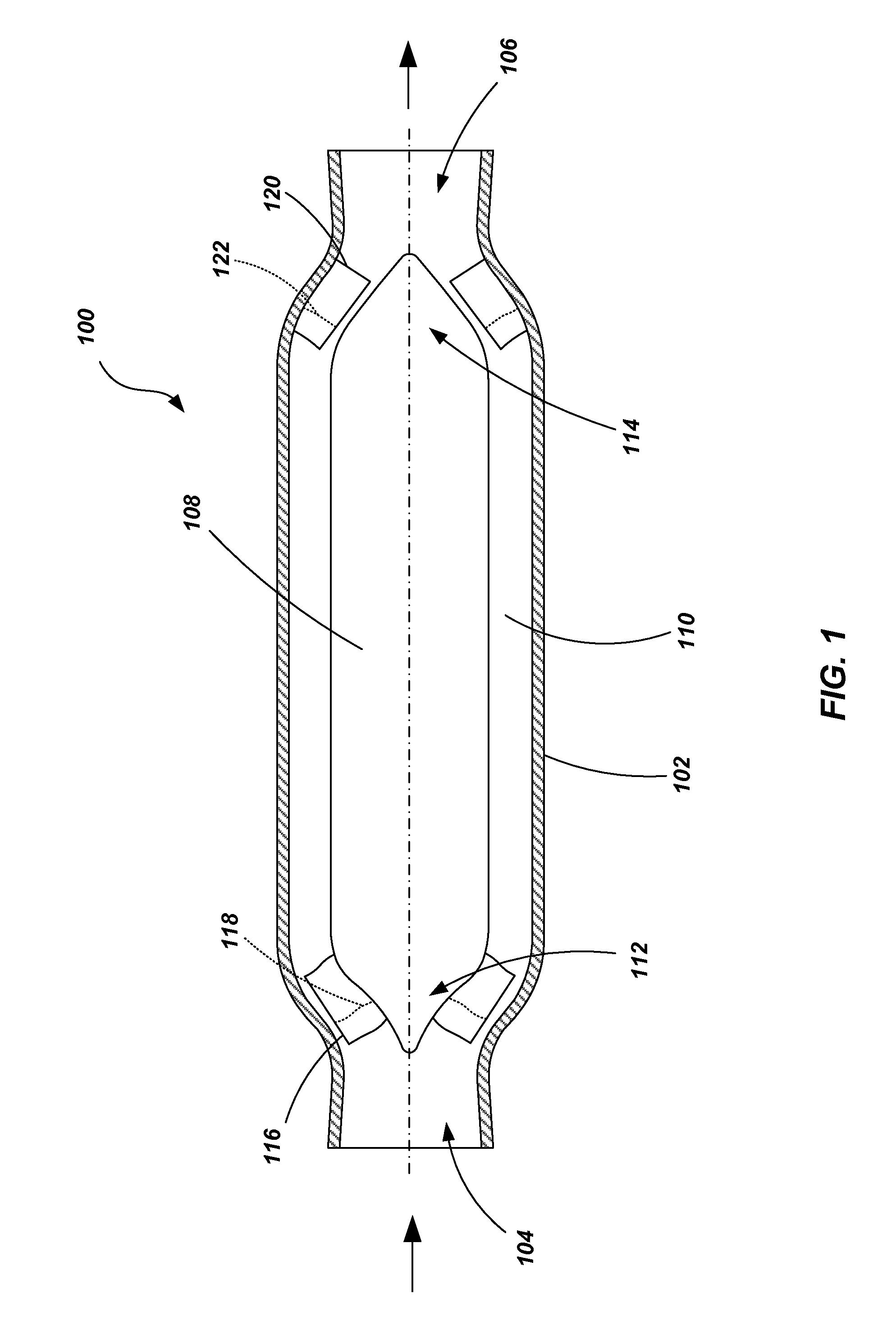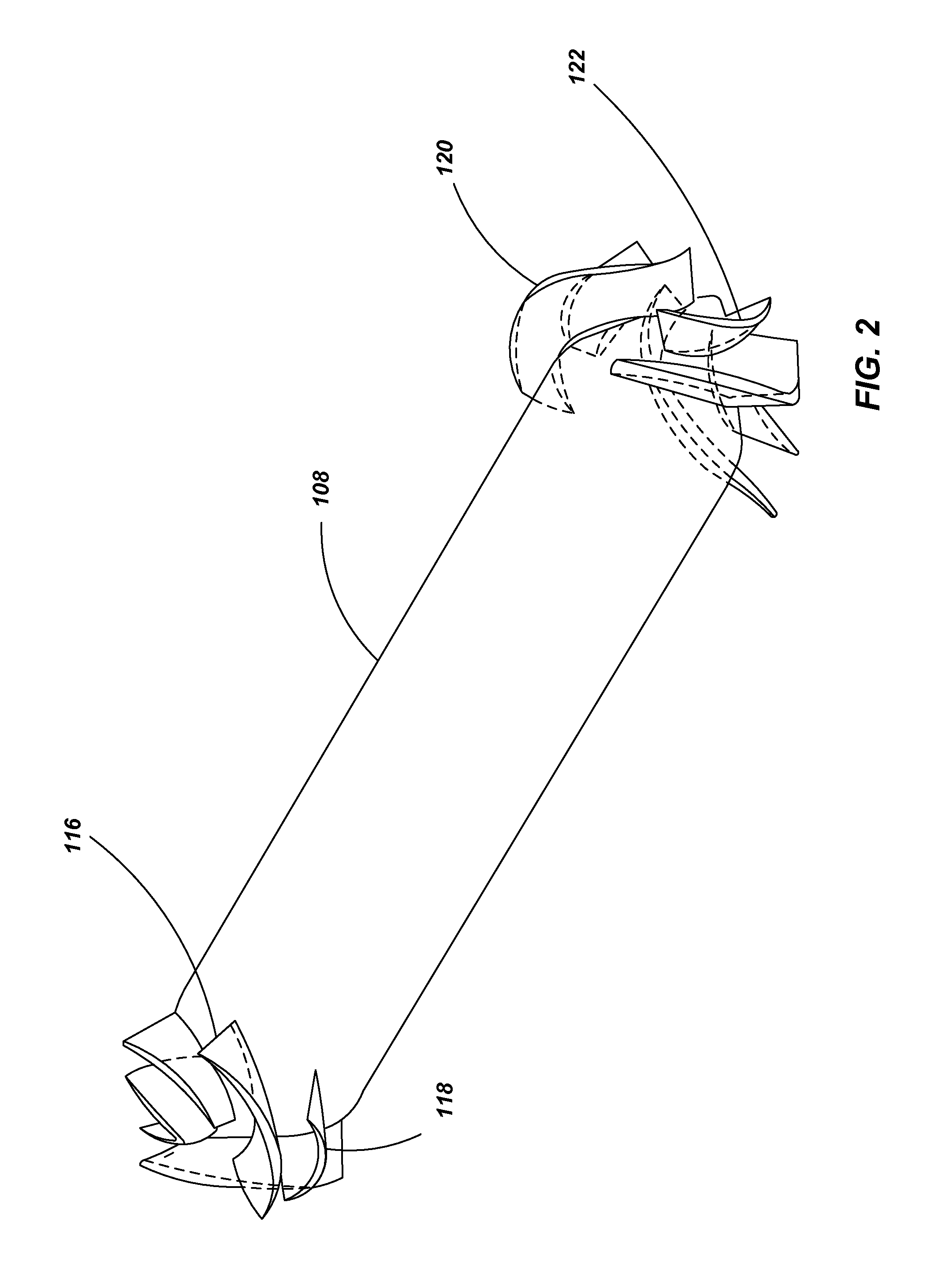Blood pump with splitter impeller blades and splitter stator vanes and related methods
a splitter impeller and splitter stator valve technology, applied in the field of pumps, can solve the problems of increased red blood cell damage, retrograde leakage flow, and weak disk friction loss, and achieve the effects of low blood damage, smooth operation, and high efficiency
- Summary
- Abstract
- Description
- Claims
- Application Information
AI Technical Summary
Benefits of technology
Problems solved by technology
Method used
Image
Examples
Embodiment Construction
[0031]Embodiments are described more fully below in sufficient detail to enable those skilled in the art to practice the system and method. However, embodiments may be implemented in many different forms and the present invention should not be construed as being limited to the embodiments set forth herein. The following detailed description is, therefore, not to be taken to be limiting in any sense. For purpose of illustration, discussions of the invention will be made in reference to its utility as a cardiac assist blood pump. However, it is to be understood that the technology may have a variety of wide applications to many types of turbomachinery including, for example, commercial and industrial pumps, compressors, and turbines.
[0032]Referring to FIGS. 1 through 5, a rotordynamic blood pump 100 is shown in accordance with an embodiment of the present invention. FIG. 1 shows a meridional section of the pump 100. FIG. 2 shows a perspective view of various components of the pump, th...
PUM
| Property | Measurement | Unit |
|---|---|---|
| Length | aaaaa | aaaaa |
| Flow rate | aaaaa | aaaaa |
Abstract
Description
Claims
Application Information
 Login to View More
Login to View More - R&D
- Intellectual Property
- Life Sciences
- Materials
- Tech Scout
- Unparalleled Data Quality
- Higher Quality Content
- 60% Fewer Hallucinations
Browse by: Latest US Patents, China's latest patents, Technical Efficacy Thesaurus, Application Domain, Technology Topic, Popular Technical Reports.
© 2025 PatSnap. All rights reserved.Legal|Privacy policy|Modern Slavery Act Transparency Statement|Sitemap|About US| Contact US: help@patsnap.com



